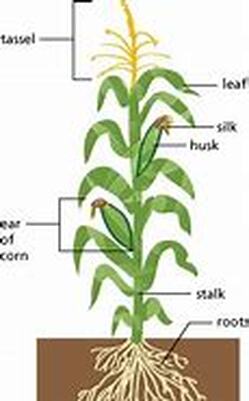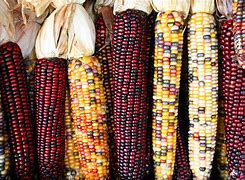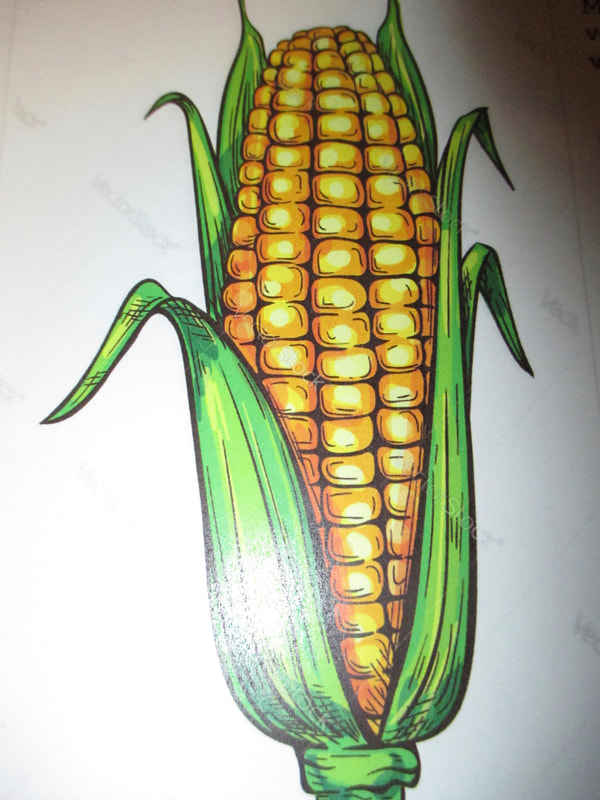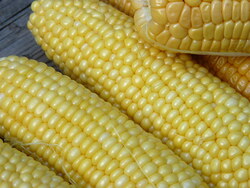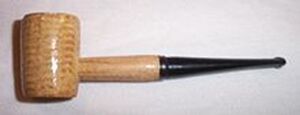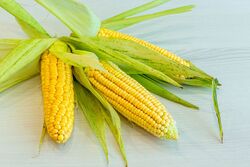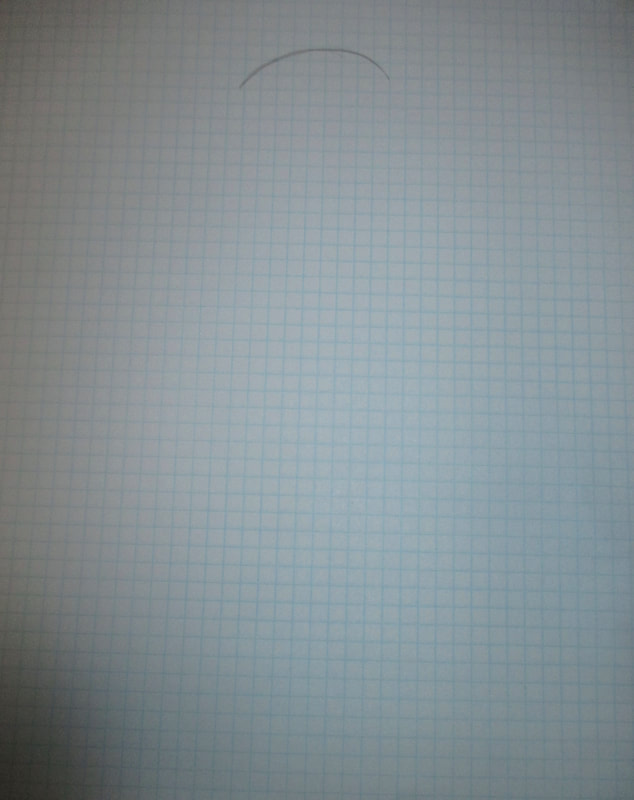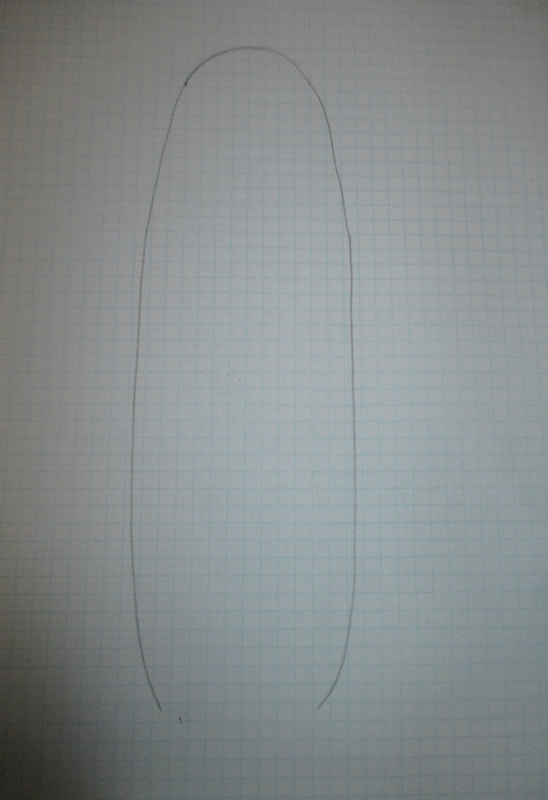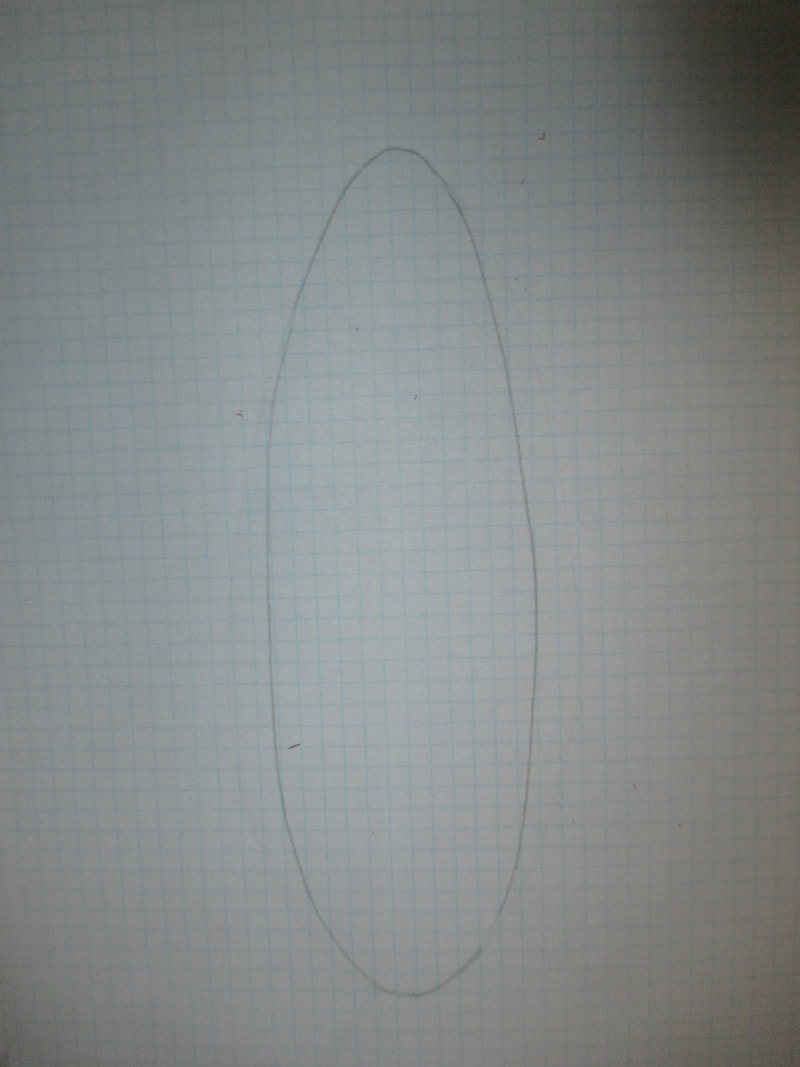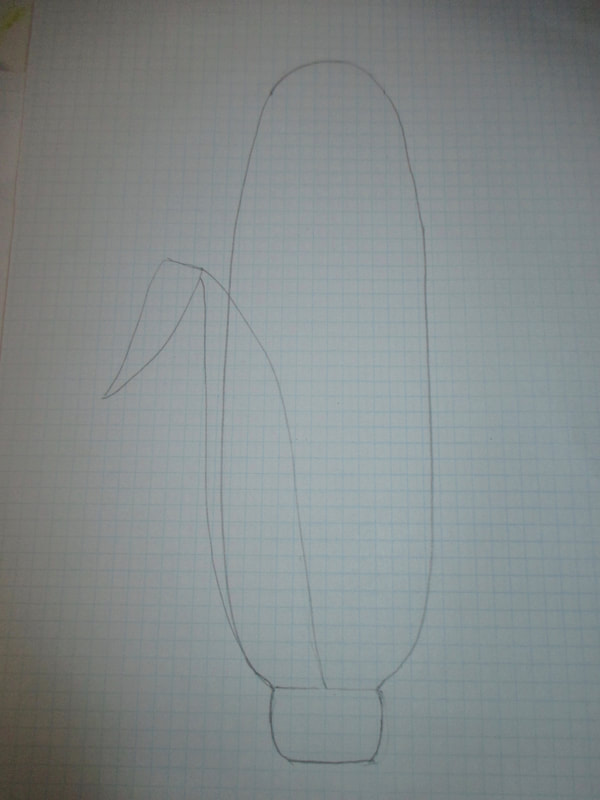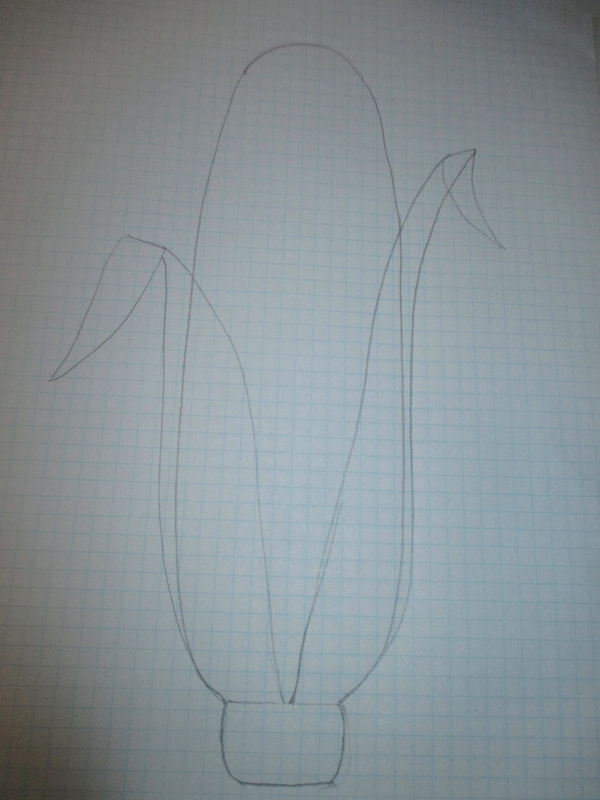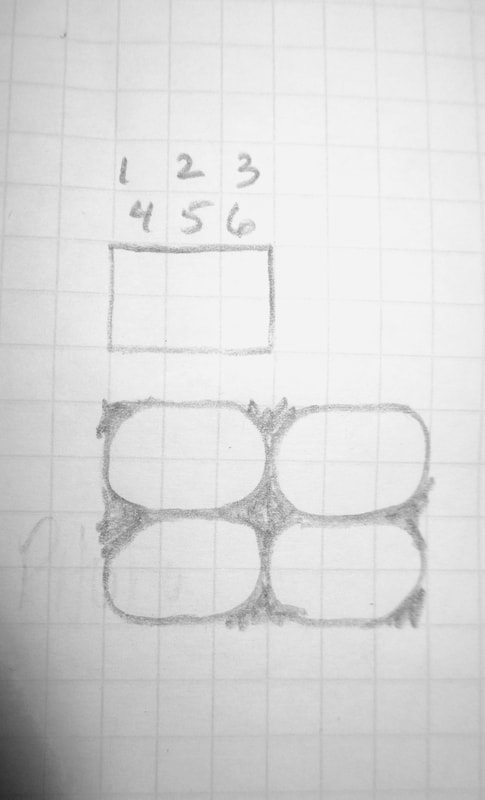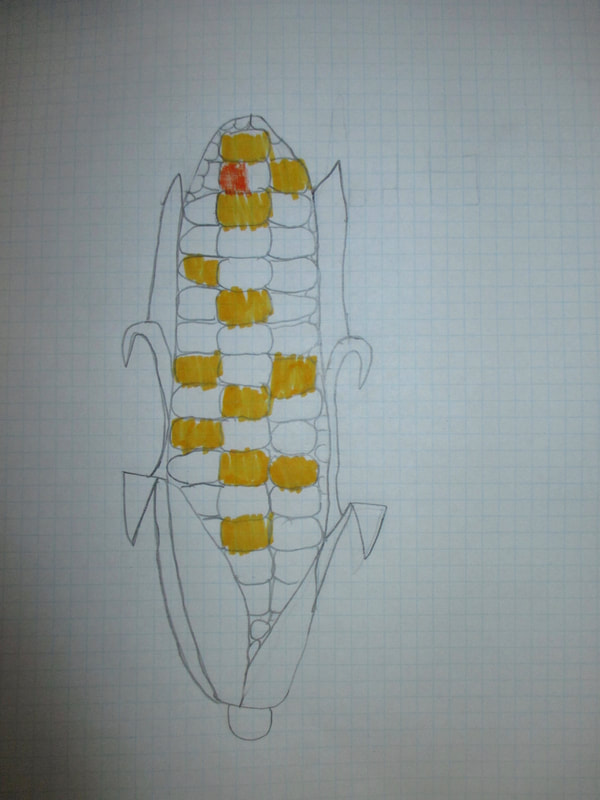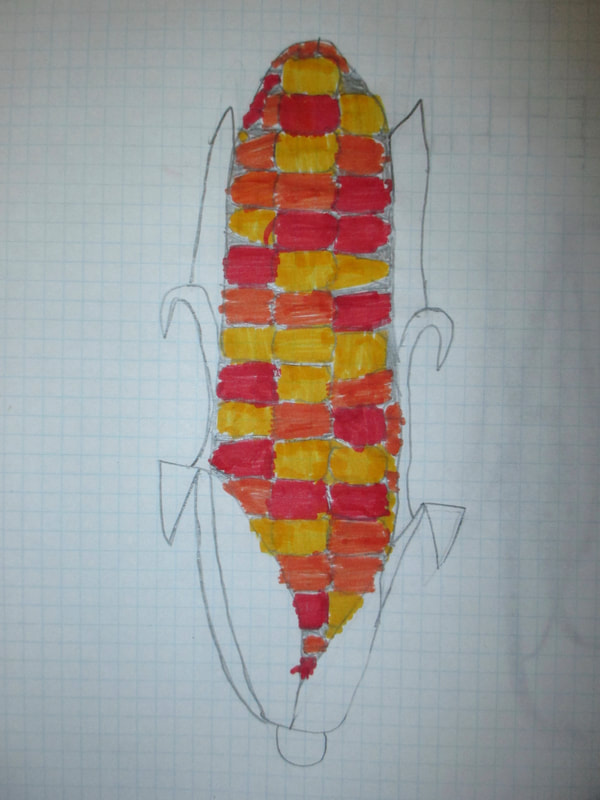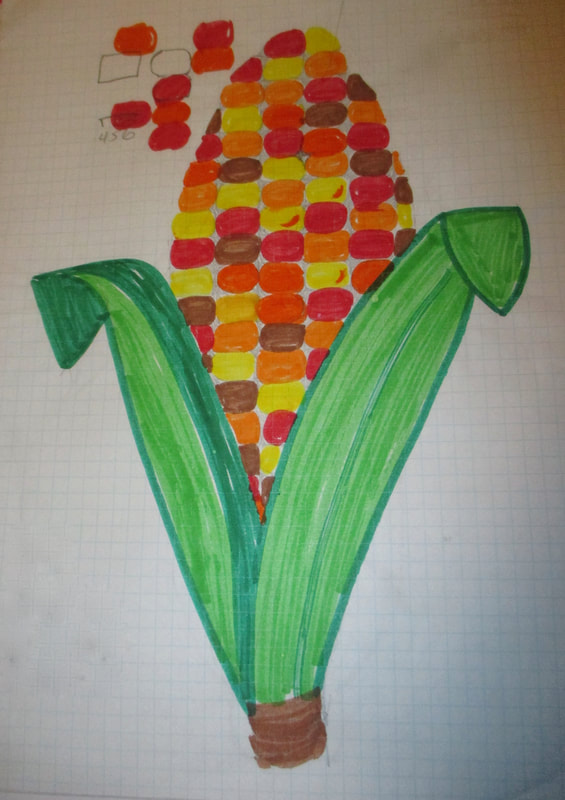how to draw an ear of corn for fall/thankshiving
The following is a 4th grade art lesson on illustrating an ear of corn, colorful for a Fall project. In the lesson students learn how to draw an ear of corn from illustrations, real life images, as well as their imagination. The lesson uses sketches, photos of an actual corn cobs, as well as learn a bit about subject matter. It always helps foraprtists to understand + be familiar with what they illustrate + not solely draw from memory or imagination.
Scroll down to find:
Scroll down to find:
- examples of corn ears
- information on the featured subject matter
- step-by-step instructions with pictures of the project
- a lesson plan (including California State Visual Art Standards, + National Visual Arts standards)
references
|
A corncob, also called cob of corn, is the central core of an ear of corn (also known as maize in Spanish-speaking countries). It is the part of the ear on which the kernels grow. The ear is also considered a "cob" or "pole" but it is not fully a "pole" until the ear is shucked, or removed from the plant material around the ear.
Young ears, also called baby corn, can be consumed raw, but as the plant matures the cob becomes tougher until only the kernels are edible. When harvesting corn, the corncob may be collected as part of the ear (necessary for corn on the cob), or instead may be left as part of the corn stover in the field. The innermost part of the cob is white and has a consistency similar to foam plastic. from Wikipedia |
parts of a corn stalk
|
step-by-step instructions
objective
Students will be able to draw a creative, + colorful, ear of corn.. Students will be able to distinguish the kernels from the grid paper squares. Students will have knowledge on an ear of corn.
materials
- grid paper
- thin pointed markers or colored pencils
- pencil sharpener
- pencils
- erasers
activity
- -Observe picture of actual ears of corn.
- If desired; have students sketch while observing shapes. Notice all details.
- Follow step-by-step drawing examples above.
- Have students clean their own areas + put materials away.
vocabulary
- Background - The part of a picture plane that seems to be farthest from the viewer
- Balance - The way in which the elements in visual arts are arranged to create a feeling of equilibrium in a work of art. The three types of balance are symmetry, asymmetry, and radial.
- Content - Message, idea, or feelings expressed in a work of art.
- Contrast - Difference between two or more elements (e.g., value, color, texture) in a composition; juxtaposition of dissimilar elements in a work of art; also, the degree of difference between the lightest and darkest parts of a picture.
- Curvature - The act of curving or bending. One of the characteristics of line.
- Curvilinear - Formed or enclosed by curved lines.
- Composition - The organization of elements in a work of art.
- Figurative - Pertaining to representation of form or figure in art.
- Foreground - Part of a 2-dimensional artwork that appears to be nearest the viewer or in the front. Middle ground + background are the parts of the picture that appear to be farther + farthest away.
- Harmony - The principle of design that combines elements in a work of art to emphasize similarities of separate but related parts.
- Line - A point moving in space. Line can vary in width, length, curvature, color, or direction.
- Line Quality - The unique character of a drawn line as it changes lightness/darkness, direction, curvature, or width.
- Negative - Refers to shapes or spaces that are or represent areas unoccupied by objects.
- Observational Drawing Skills - Skills learned while observing firsthand the object, figure, or place.
- Positive - Shapes or spaces that are or represent solid objects.
- Shape - A two-dimensional area or plane that may be open or closed, free-form or geometric. It can be found in nature or is made by humans.
- Space - An area in which objects or images can exist.
- Unity- Compositional similarity, oneness, togetherness, or cohesion. Total visual effect in a composition achieved by the careful blending of the elements of art and principles of design. Total visual effect in a composition achieved by the careful blending of the elements of art + the principles of design.
- Variety - The use of different lines, shapes, + colors in artwork.
variation
- trace over grid paper to put on drawing paper
- use larger grid paper
- use another medium to create (e.g. colored pencils)
- make more than one ear of corn
- draw a few ears of corn and display or glue on stalk
Ca state visual arts standards
2.0 CREATIVE EXPRESSION
Communication and Expression Through Original Works of Art
2.7 Use the contrast (light and dark) expressively in an original work of art.
4.0 AESTHETIC VALUING
Make Informed Judgement
4.5 Describe how the individual experiences of an artist may influence the development of specific works of art.
5.0 CONNECTIONS, RELATIONASHIPS, APPLICATIONS
Connections and applications
5.4 Identify through research twentieth-century artists who have incorporated symmetry as a part of their work and then create a work of art, using bilateral or radial symmetry.
Communication and Expression Through Original Works of Art
2.7 Use the contrast (light and dark) expressively in an original work of art.
4.0 AESTHETIC VALUING
Make Informed Judgement
4.5 Describe how the individual experiences of an artist may influence the development of specific works of art.
5.0 CONNECTIONS, RELATIONASHIPS, APPLICATIONS
Connections and applications
5.4 Identify through research twentieth-century artists who have incorporated symmetry as a part of their work and then create a work of art, using bilateral or radial symmetry.
national core arts standards
VISUAL ARTS - CONNECTING
Anchor Standard 10; Synthesize and relate knowledge and personal experiences to make art.
Enduring Understanding; Through art-making, people make meaning by investigating and developing awareness of perceptions, knowledge, and experiences.
Essential Question(s); How does engaging in creating art enrich people's lives? How does making art attune people to their surroundings? How do people contribute to awareness and understanding of their lives and the lives of their communities through art-making?
4th VA:Cn10.1.4a Create works of art that reflect community cultural traditions.
Anchor Standard 10; Synthesize and relate knowledge and personal experiences to make art.
Enduring Understanding; Through art-making, people make meaning by investigating and developing awareness of perceptions, knowledge, and experiences.
Essential Question(s); How does engaging in creating art enrich people's lives? How does making art attune people to their surroundings? How do people contribute to awareness and understanding of their lives and the lives of their communities through art-making?
4th VA:Cn10.1.4a Create works of art that reflect community cultural traditions.
